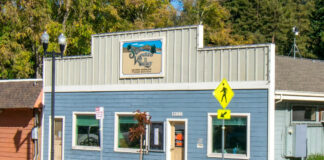There is much talk these days about gluten-free food and gluten-free diets. I’d like to explain what this is all about.
Gluten is a protein found in foods containing wheat, barley or rye. The consumption of gluten by susceptible individuals causes celiac disease, which affects the digestive system.
People with celiac disease who eat gluten-containing food experience an immune reaction that damages the lining of the small intestine. The resulting damage interferes with the intestine’s ability to absorb certain nutrients, which in time can deprive many of the vital organs of proper nourishment.
The most common symptoms of celiac disease are abdominal pain, vomiting, bloating and diarrhea. Less common symptoms are depression, irritability, joint pains, upset stomach, cramps, rashes and weight loss. Infants and young children seem to have more of the digestive symptoms than adults do.
About 3 million people in the U.S. have celiac disease. Having a family member with celiac disease does raise one’s risk of the disease.
Diagnosing celiac disease can be difficult, because some of its symptoms are similar to those of other illnesses, such as irritable bowel syndrome, diverticulitis, intestinal infections and chronic fatigue syndrome.
Diagnosis rates are increasing, however, as doctors become more aware of the variety of symptoms of this disease and reliable blood tests are more available. A biopsy of the small intestine can be done to confirm the diagnosis.
At this time, there is no cure for celiac disease, but it can be managed by a proper diet.
For most people, following a gluten-free diet will alleviate the symptoms, heal the damaged intestinal lining and prevent further damage. Symptomatic improvement can occur within days of beginning the diet, but it may take many months for the small intestine to heal itself.
To stay well, people with celiac disease need to be on a gluten-free diet for the remainder of their lives.
In spite of having celiac disease, one can still eat a well-balanced, healthy and flavorful diet.
Wheat flour can be replaced with flour made from rice, soybeans, potatoes, quinoa, buckwheat or beans. There are now a wide variety of gluten-free pastas, breads, snacks and other foods available in grocery stores and restaurants.
People with celiac disease must be careful about snacks and meals they buy at school, work or restaurants, as well as food purchased at grocery stores. Eating out can be a challenge when avoiding gluten-containing foods.
Here are some examples of common foods and beverages to avoid unless they are labeled as gluten free:
– Bread
– Cake, pie, cookies, crackers and croutons
– Processed luncheon meat and gravy
– Oats
– Salad dressing and sauces (including soy sauce)
– Soup
– Beer
See your doctor if you think you are having any symptoms of celiac disease to confirm the diagnosis and work on a treatment plan.
– Terry Hollenbeck, M.D., is an urgent-care physician at Palo Alto Medical Foundation Santa Cruz in Scotts Valley. Readers can view his previous columns on his website, valleydoctor.wordpress.com, or email him at va**********@*******al.net. Information in this column is not intended to replace advice from your own health care professional. For any medical concern, consult your own doctor.












